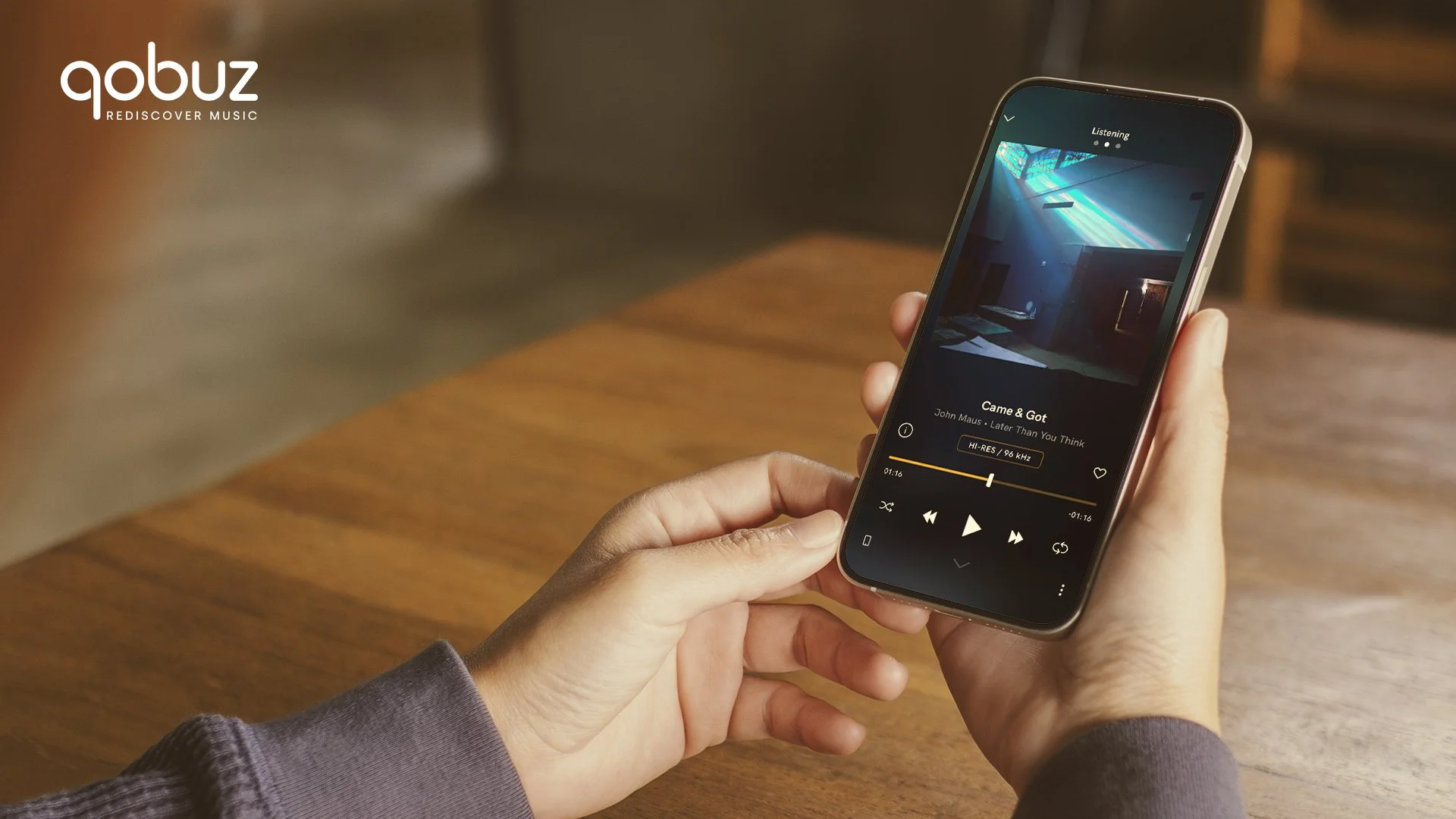Hi-Res, Lossless, MP3: How to Listen to Music in 2025?
Hi-Res, Lossless, or MP3—does the question still spark debate? For Qobuz, a pioneer in high-quality audio since 2007, the answer is clear: your ears deserve better than MP3. After decades of compromises forced by technical limitations, lossless is finally emerging as the new audio standard.
Lossless: Trend or listener demand?
In 2008, when Qobuz launched its CD-quality lossless download service, quickly followed by high-resolution (Hi-Res) downloads, the idea seemed almost utopian. At a time when MP3 ruled, offering files ten times larger was a bold gamble.
Today, this pioneering vision has become widespread. Tidal followed in 2014, Amazon Music in 2019, Apple Music in 2021, and Spotify just added Lossless to its premium offering in September 2025.
Why the shift? Today, there are no technical constraints justifying the degraded sound of an MP3 compared to the original file. High-speed WiFi, 5G, and fiber allow large files to stream effortlessly, and quality hi-fi headphones are now available for about $225. In 2025, a decent setup for listening in uncompressed audio quality costs less than $335, compared to thousands of dollars 15 years ago.
Increasingly discerning listeners are finally rediscovering what they missed with MP3: sound quality.
MP3, Lossless, Hi-Res, what's the difference?
MP3 compresses and removes data to shrink file size: the essentials remain audible, but details and subtleties are lost. Lossless (a no-loss compression method) at CD quality preserves all the data. Hi-Res lossless goes further: it is the studio’s high-definition sound.
Hi-Res reveals every musical nuance with unmatched clarity, delivering finer highs and greater dynamics.. Many describe a greater sense of space and “breathing,” making the listening experience more immersive and touching.
Qobuz offers files up to 24-bit/192 kHz, and even in DSD/DXD in the download store for purists—studio-quality audio meeting production standards and faithfully reproducing the work of artists and sound engineers. Qobuz always provides files exactly as received from the labels, without any modifications, offering a unique guarantee of authenticity.
While enjoying this exceptional audio quality requires appropriate equipment and some may question it as a placebo, for music lovers and audiophiles, it’s pure listening Nirvana.
What does it actually sound like? On quality headphones or speakers, the difference is clear: lossless restores the air around instruments, the depth of the soundstage, the subtleties of a breath or reverb that MP3 erases.
Clearer. More audible. You realize what gets lost with MP3.
Environmental impact
Technically, a three-minute MP3 file is about 2.4 MB. The same track in Lossless is 8–12 MB (CD quality), and in Hi-Res, 20–30 MB. Offline listening and caching minimize bandwidth usage. Compared to video, the audio environmental footprint is minimal: streaming a two-hour HD movie (≈6 GB) is equivalent to roughly 300 Lossless tracks.
MP3 in 2025: Any advantage left?
Audio quality: From vinyl to digital
Between 1980 and 2000, the hi-fi industry reached a technical golden age. CD players in the 90s rivaled high-end vinyl turntables, known for exceptional sound quality. Then the internet arrived: with limited storage and slow connections, MP3 prevailed for its convenience. We accepted a drop in quality for the sake of practicality.
The paradox: while engineers and hi-fi manufacturers refined the technology, digital imposed the 128 kbps MP3 standard. In 2025, that compromise is no longer necessary.
Putting the work and the artist back at the heart of music
An album represents months of studio work, careful mixing, and mastering to achieve the artist’s intended sound. Lossy formats like MP3 remove audio data to shrink file size: frequencies are cut, subtleties lost—it’s like turning a painted masterpiece into a photocopy on newsprint.
2025: Respecting musical art
Today, MP3 only makes sense on the go with limited bandwidth. But as soon as the connection allows, storage, speed, and equipment are all sufficient to listen in lossless. Choosing to listen in higher quality is a simple act that respects the artists’ work and elevates our relationship with music.
Offering lossless audio is listening to music as it was intended. Today, it’s an option accessible to everyone.

